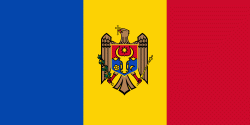Cimişlia
 |
The first written mention of Cimişlia dates from 4 July 1620, when the savant Vladimir Nicu explained that a local legend had given the town its name from an unknown origin word meaning "wealth". The priest Iacob Iusipescu, who made the first attempt at a written history of Cimişlia in 1874, explained that in fact it was a word of unknown origin, but cimiş was the name given to construction workers and bricklayers at that time, used by Romanian and Tatar alike.
The basis for the name might also lie in a bucolic legend of lovers, Cimiş şi Lia (Cimiş and Lia), for whom jewels appeared, birds sang, and springs appeared from the earth.
In fact, the reality of the locale is much harsher. Although in 1827 Cimişlia became an administrative center, many of its residents died of a plague and there was need of a special cemetery in the southeast part of town. Situated on the steppe of Budjak, by the Cogâlnic river, the city has often suffered from the droughts typical of the area. Dimitrie Cantemir, referring to this river in his work Descriptio Moldaviae, says "...one could say that it doesn't arise from a spring: it is only full after the rains of autumn and only then can one call it even a rivulet. All summer it is dry..." This would apply as well in our time.
In 1840 the locality received a statute as a market town. Its first school opened in 1844, and in 1885 the "hospital" of Zemstva (treating both people and animals). Between the two World Wars, (1918–1940), Cimişlia formed part of Tighina County or Ținutul Nistru; later, as part of the Soviet Union, it became a district center.
Map - Cimişlia
Map
Country - Moldova
 |
 |
| Flag of Moldova | |
Most of Moldovan territory was a part of the Principality of Moldavia from the 14th century until 1812, when it was ceded to the Russian Empire by the Ottoman Empire (to which Moldavia was a vassal state) and became known as Bessarabia. In 1856, southern Bessarabia was returned to Moldavia, which three years later united with Wallachia to form Romania, but Russian rule was restored over the whole of the region in 1878. During the 1917 Russian Revolution, Bessarabia briefly became an autonomous state within the Russian Republic. In February 1918, it declared independence and then integrated into Romania later that year following a vote of its assembly. The decision was disputed by Soviet Russia, which in 1924 established, within the Ukrainian SSR, a so-called Moldavian autonomous republic on partially Moldovan-inhabited territories to the east of Bessarabia.
Currency / Language
| ISO | Currency | Symbol | Significant figures |
|---|---|---|---|
| MDL | Moldovan leu | L | 2 |
| ISO | Language |
|---|---|
| RO | Romanian language |
| RU | Russian language |
| TR | Turkish language |















